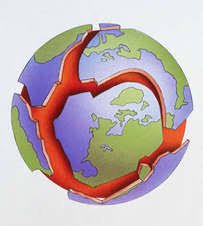New Earthquake Threat Discovered in Pacific Northwest
A recent study led by the University of Arizona has unearthed a new earthquake threat to the Pacific Northwest. Researchers utilized tree ring analysis to pinpoint a significant seismic event in the Puget Lowlands of western Washington around late A.D. 923 or early 924.
Parallel to Turkey-Syria Earthquakes
The study revealed that similar shallow faults, located less than 18 miles beneath the surface, ruptured approximately 1,000 years ago. These events mirrored recent devastating earthquakes that struck the Turkey-Syria border, including a 7.8-magnitude quake followed by another nearly as large nine hours later.
Threat to Over 4 Million Residents
This newfound earthquake threat poses a substantial risk to over 4 million residents in the Pacific Northwest, encompassing major cities like Seattle, Tacoma, and Olympia. The researchers noted that the ancient seismic event in this region could have been either a solitary earthquake with an estimated magnitude of 7.8 or a sequence of twin quakes occurring consecutively, with magnitudes of about 7.5 and 7.3.
Interconnected Shallow Faults
One significant revelation from the study was the interconnectedness of these shallow faults. These events on shallow faults are intricately linked, either through subterranean connections or by the transference of stress from one fault to another. Current regional hazard models, used for engineering design and policies, do not account for this earthquake threat but should, according to Professor Bryan Black, the study’s first author.
Discovery of Shallow Faults
Scientists have identified shallow faults in the region since the 1960s, including the Seattle Fault, Saddle Mountain Fault, Tacoma Fault, and Olympia Fault. Prior to this study, it was uncertain when and how these faults had last ruptured.
Synchronicity in Tree Deaths
To investigate further, researchers collected samples from tree stumps that perished during previous seismic events. Using underwater chainsaws on makeshift barges, they extracted samples from trees that died during the millennial cluster of earthquakes. Comparing the growth patterns of ancient trees with those still alive, the study found synchronicity in the timing of tree deaths across different fault lines.
Changing Understanding of Hazard
Demonstrating that these faults can rupture synchronously or in rapid succession has significantly altered the understanding of the hazard in the region. Current hazard models do not recognize the possibility of linked faulting.
Potential for Rapid Succession
In the event of simultaneous or rapid succession ruptures of faults like Saddle Mountain and Seattle, the impact could be on par with the 1906 earthquake in San Francisco. The infrastructure and landforms, already weakened by one quake, would be further damaged by the second, potentially causing significant destruction.
Month: Current Affairs - September, 2023
Category: International / World Current Affairs • Science & Technology Current Affairs








